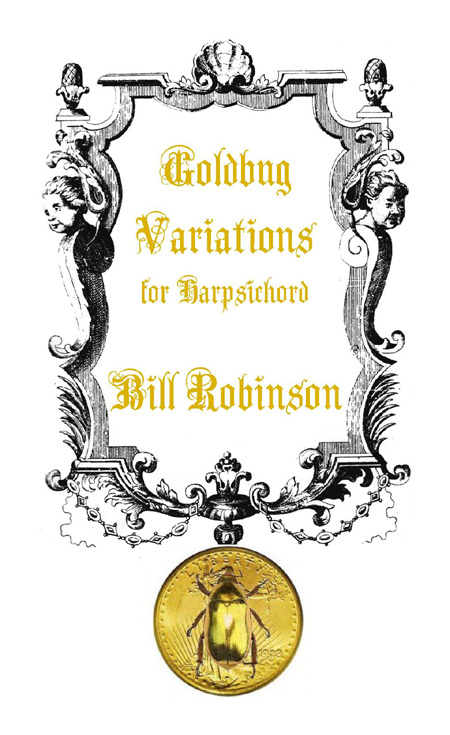



 Score, Harpsichord Legal Letter
Score, Harpsichord Legal Letter
Program notes
In 1980, I was living in a crude hunting cabin in the woods of Maine. At an
estate auction I bought an old upright piano for $75 and took it two miles from
the paved road up to the cabin, cleared out the mouse corpses, and got to
composing. In early 1981, I started a large work for two pianos, in variation
form with a theme vaguely reminiscent of the Aria used by J. S. Bach in the Goldberg
Variations. After many adventures, some eighteen months later it was
complete, 22 minutes long, and named Goldbug Variations. By then I was
studying physics at NTSU and had access to fine pianists at the music school,
and in November of 1982 the variations had its one and only performance for
some twenty people. Later, I arranged the piece for full orchestra, but it
never saw the light of day.
In 2007 I wrote the Ananda Concerto for violin and orchestra for my
friend Eric Pritchard. For the middle movement, I took the best ten minutes of
the old Goldbug Variations and reworked it for the concerto.
Eric started performing my music in the spring of 2006. Elaine Funaro attended
the first such concert at Duke, and asked me to write a piece for harpsichord.
This was a big challenge, as I do not have access to an instrument, and my
piano writing tends to be heavy on the pedal and dynamic changes. However the
idea percolated for several years. In the fall of 2011, after eight months away
from composition to author my Autobillography, I was ready for this new
adventure. I took the theme from the original Goldbug, but nothing else,
starting from absolute scratch. As pianos are ubiquitous and harpsichords rare,
and I am an unknown composer, I have made an arrangement for piano.
My fellow composers frequently criticize my “incessant tonality”, while some
audience members have asked me “Why do you write atonal music?” The chromatic
nature of this theme forces me to be harmonically adventurous, while the
antique nature of the instrument gives a traditional ambience, trills and all.
Posthumous apologies to Sebastian Bach, Beethoven, Brahms, D. Scarlatti,
Couperin, and Scott Joplin, who made this work possible by being in the public
domain.
Technical issues for performers
After listening to Glenn Gould play the Goldberg Variations, I was very
careful to mark all the tempos, which was not an option for Bach. Performers
should follow these for the overall tempo of each variation until they know the
piece very well. I usually end up asking musicians not to play too fast.
In general, my style tends to legato unless otherwise specified. When short
notes are desired, I have put in dots, but otherwise notes should get a full
value. In the harpsichord version, I have written in extensive finger pedaling,
but this is only a minimum, the rest being up to the discretion of the
performer. It would be best to play this piece in a room with generous
reverberation.
We have short attention spans these days, and this is a comparatively long work
for our time. I have no objections to a short selection presented on a concert
instead of the whole piece, as long as the theme is included.